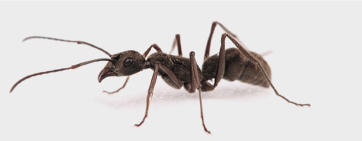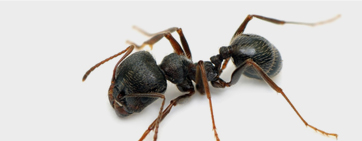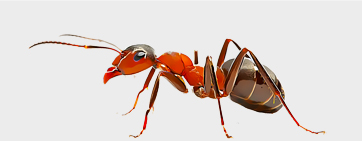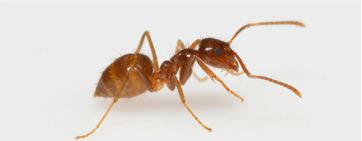INfomation about
ANTs
Our Team Knows Ants
A small
Intro about aNTS
Ants can be difficult for residential and commercial properties to control in NYC & NJ. Having a professional pest control company that specializes in serving New York and New Jersey is essential to a long term ant control solution that provides peace of mind.
Argentine Ants
Linepithema humile
Overview:
Argentine ant colonies can grow to monumental size. A single colony can contain several hundred thousand workers, with the colony borders sometimes covering entire habitats. Worker Argentine ants are about ¹⁄₁₆ of an inch long. Queen argentine ants are ¹⁄₈ of an inch to ¼ of an inch long.
Habits:
Argentine ants prefer to eat sweets such as honeydew, but they will eat almost anything including meats, eggs, oils and fats. Their colonies are usually found in wet environments near a food source. Outdoors, they usually build shallow nests under boards or stones, beneath plants or alongside sidewalks. When conditions in their natural environment are either too wet or too dry, Argentine ants may seek shelter indoors, where they often nest near water pipes, sinks or potted plants.
Thr eats:
Argentine ants do not pose a health threat, but they can contaminate food and should be avoided.
Prevention:
- Eliminate any standing water on your property. Argentine ants are attracted to moisture.
- Keep tree branches and other plants cut back from the house. These can provide “pest highways” into your home.
- Seal any cracks or openings around the exterior of your house, especially where utility pipes and electrical lines enter.
- Make sure that firewood and building materials are not stored next to your home. Argentine ants like to build nests in moist wood.
- If you suspect you have an Argentine ant infestation, contact a licensed pest professional.
Did you know? Argentine ants...
- give off a greasy or musty odor when crushed.
- are one of the few ant species where queens assist with foraging for food.
- were probably introduced to the U.S. from their native Brazil via coffee ships arriving to New Orleans in the late 1800s.
- deposit trails continuously, instead of just from nest to food source. This habit ensures they do not waste time visiting the same area for food.
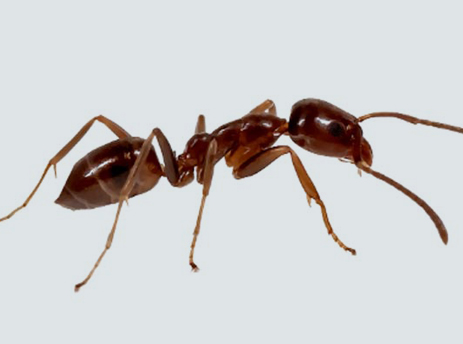

Color:
Light to dark brown and shiny
Shape:
Segmented; oval
Size:
1⁄₁₆ – ¼ inch long
Region:
Found mostly in the southern U.S., California and HawaiiPackages For Ants Protection
Save Money Today
up to $75 OFF
If you are a new customer, enjoy $75.00 off your Home Pest Protection Premium plan.
Coupon Code: HomePre22

Call & Get Your Free Estimate
855-737-8765
Carpenter Ants
Camponotus species
Overview:
Carpenter ants get their name because they excavate wood in order to build their nests. Their excavation results in smooth tunnels inside the wood. Carpenter ants range in size from ¼ of an inch for a worker ant to up to ³⁄₄ of an inch for a queen.
Habits:
Carpenter ants typically attack wood that is or has been wet. They usually come into buildings through cracks around doors and windows, holes in a structure meant for wires, or through wet, damaged wood. They will also crawl along overhead wires, shrubs or tree limbs that touch the building far above the
ground. Carpenter ants build their nests in various wood sources including tree stumps, fence posts, firewood or landscaping. A colony can have multiple nests inside structures as well as outdoors. Carpenter ants need a constant water source to survive.
Threats:
Carpenter ants damage wood through their nest building. Over time, an infestation can cause serious structural damage to a property.
Prevention:
- Eliminate sources of moisture or standing water. Be especially vigilant in protecting crawl spaces, basements and attics.
- Trim tree branches away from your home.
- Fill any gaps or cracks on the outside of your home with silicone caulk.
- Make sure that firewood and building materials are not stored next to your home.
- Inspect wood on your property for signs of an infestation, such as the appearance of small openings on the surface of wood.
- If you suspect you have a carpenter ant infestation, contact a licensed pest professional.
Did you know? Carpenter ants...
- can live in mature colonies of more than 10,000 workers.
- first invade wet, decayed wood, but they may eventually build paths through dry, undamaged wood.
- do not sting, but their bites can be quite painful.
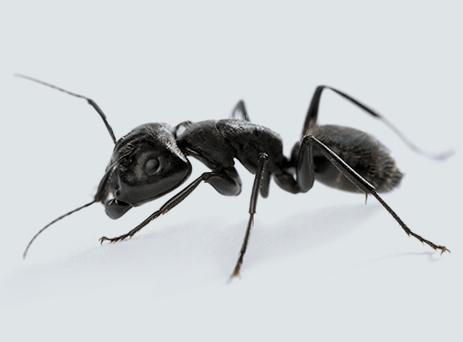

Color:
Black, red or a combination
Shape:
Segmented; oval
Size:
¼ – 3⁄₄ inch long
Region:
Found throughout the U.S., especially in the NorthCall & Get Your Free Estimate
855-737-8765 or
Odorous House Ants
Tapinoma sessile
Overview:
This ant gets its name from the strong, rotten coconut-like smell it gives off when crushed. These ants are one of the most common pests in the United States!
Habits:
Odorous house ants like to eat sweets, especially honeydew. Indoors, they are likely to nest near moisture sources, such as in wall voids near hot water pipes, in heaters, beneath leaky fixtures in bathrooms, under kitchen or bathroom sinks and also in wood damaged by termites. Outside, they are often found in exposed soil or under stacks of firewood, lumber or bricks.
Threats:
These ants do not pose a public health risk, but they can contaminate food and should be avoided.
Prevention:
- Clean up spills and crumbs on counter tops and kitchen floors.
- Eliminate standing water. Pests, such as odorous house ants, are attracted to moisture.
- Keep tree branches and other plants cut back from the house. Sometimes pests use these branches to get into your home.
- Make sure that there are no cracks or little openings around
the bottom of your house. Ants commonly use these to get into your home. - Make sure that firewood and building materials are not stored next to your home.
- If you suspect you have an odorous house ant infestation, contact a licensed pest professional.
Did you know? Odorous House ants...
- are extremely fond of honeydew
- move their nests every three months or so in response to rain.
- have been known to nest in honeybee hives, beneath the top and inner cover.
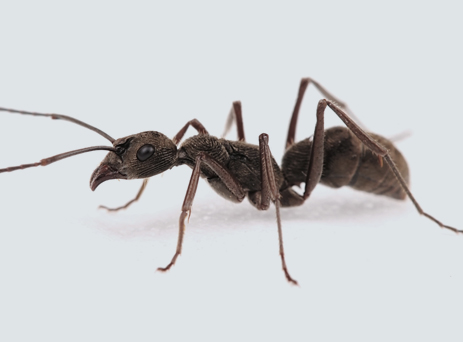

Color:
Brown to black
Shape:
Segmented; oval
Size:
¹⁄₁₆ – ¹⁄₈ inch long
Region:
Found throughout the U.S.Packages For Ants Protection
Save Money Today
up to $75 OFF
If you are a new customer, enjoy $75.00 off your Home Pest Protection Premium plan.
Coupon Code: HomePre22

Call & Get Your Free Estimate
855-737-8765
Pavement Ants
Tetramorium caespitum
Overview:
Pavement ants get their name because they make their nests in or under cracks in pavement. However, they can also infest structures. Pavement ant colonies are moderately large, averaging around 4,000 workers with several queens.
Habits:
These ants will eat almost anything, including other insects, seeds, honeydew, honey, bread, meats, nuts and cheese. In buildings, they are most likely to be found in ground-level masonry walls of foundations, but they will occasionally nest in walls, insulation and under floors, and near heat sources in the winter. They enter buildings through cracks in the slab and walls, as well as through natural openings. Outside, these ants typically nest under stones, pavement cracks and next to buildings.
Threats:
These ants do not pose a public health risk, but they can contaminate food and should be avoided.
Prevention:
- Keep kitchens and other dining areas clean and free of
crumbs and spills. - Eliminate standing water. Moisture attracts many pests,
including pavement ants. - Keep tree branches and other plants cut back from the house.
Sometimes pavement ants use these branches to get into
your home. - Seal any cracks or openings around the exterior of your
house, especially where utility pipes and lines enter - Make sure that firewood and building materials are not stored
next to your home. - If you suspect you have a pavement ant infestation, contact a
licensed pest professional.
Did you know? Pavement ants...
- will eat almost anything, but prefer meats and greasy foods.
- are not usually aggressive, but they can bite and sting.
- forage in trails, for distances of up to 30 feet.
- are known to climb up masonry walls and emerge into false ceilings, and then come down into occupied areas.
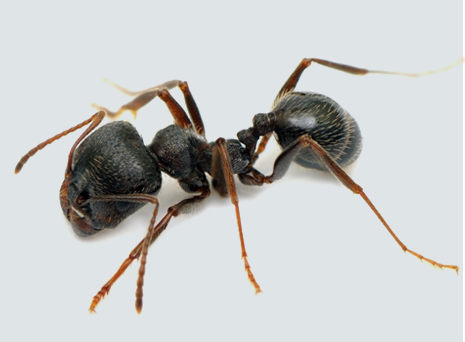

Color:
Dark brown to blackish
Shape:
Segmented; oval
Size:
¹⁄₁₆ – ¹⁄₈ inch long
Region:
Found throughout the eastern half of the U.S., California and WashingtonCall & Get Your Free Estimate
855-737-8765 or
Red Imported Fire Ants
Solenopsis invicta
Overview:
Red imported fire ants (RIFA, for short) get their common name from their ability to inflict painful bites and stings. Originally from Brazil, RIFAs were introduced to the U.S. in 1933 and are now found throughout the southern part of the country.
Habits:
Red imported fire ants usually nest in soil near structural foundations or in landscaping. They build large mound nests that are flattened and irregular in shape, and between two and four square feet in size. Although these ants usually nest outdoors, they can gain access to buildings through HVAC systems and AC
units, and will nest in areas of exposed soil within buildings, such as bath traps. RIFAs are commonly introduced into new areas through potted plants, shrubs and trees.
Threats:
Fire ants will sting humans who disturb a nest. The sting of a RIFA is painful and often results in a raised welt that becomes a white pustule. Often, a person stung by a RIFA receives multiple painful stings from more than one of the ants. Those with allergies to insect stings will react more severely.
Prevention:
- Red imported fire ants and their telltale mound nests should be carefully avoided.
- To prevent entry into a structure, seal all internal and external cracks and crevices.
- If you are stung by fire ants, seek medical attention promptly.
- If you suspect you have a red imported fire ant nest on your property, contact a licensed pest professional. Do not attempt to remove the nest on your own.
Did you know? Red imported fire ants…
- have a unique way of dealing with floods. A displaced colony will form a ball and raft flood rivers until it encounters dry land.
- could send as many as one to two percent of the U.S. population into anaphylactic shock with their stings.
- are attracted to electrical junction boxes of traffic signals, air conditioners, etc. They have been known to infest the boxes en masse, causing the equipment to malfunction.
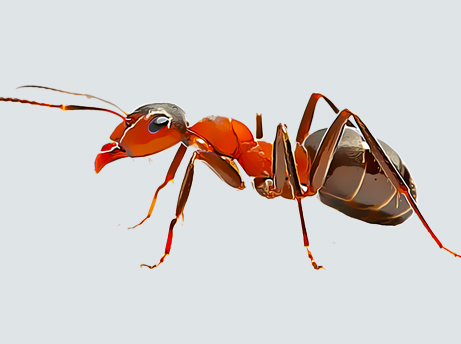

Color:
Dark reddish-brown
Shape:
Segmented; oval
Size:
¹⁄₁₆ – ¼ inch long
Region:
Found in the Southeastern U.S., from Virginia to Texas, as well as California and New MexicoCall & Get Your Free Estimate
855-737-8765 or
Crazy Ants
Paratrechina longicornis (Latreille)
Overview:
Crazy ants get their common name from the workers’ habit of running in an erratic, jerky manner when searching for food.
Habits:
Crazy ants feed primarily on live and dead insects, seeds, fruits honeydew. They enter homes in the autumn or after rainfall because both conditions reduce their supply of honeydew. Inside, crazy ants usually nest underneath floors or carpeting, in potted plants and in wall voids. Outdoors, their nests are shallow and commonly found in soil under objects or next to foundations. Crazy ants are highly adaptable, nesting in both dry and moist habitats.
Threats:
Crazy ants do not pose a health threat, but if they gain entry to a structure they can become a nuisance.
Prevention:
- Trim vegetation away from your home to prevent pathways inside.
- Seal all cracks and crevices around the outside of your home, including around doors and windows
- Food spills and other potential attractants should be cleaned up as soon as possible
- If you suspect you have a crazy ant infestation, contact a licensed pest professional.
Did you know? Crazy ants…
- are found throughout the U.S., but are confined to the
indoors in the northern states because they cannot survive the winter outdoors. - are known to completely abandon one nesting site and move to another.
- usually live in small colonies, composed of up to 2,000 workers, but larger colonies of more than 10,000 ants have also been found in debris piles and mulch beds.
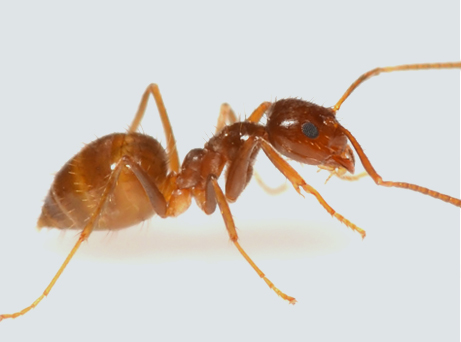

Color:
Dark brown to black with a gray sheen
Shape:
Segmented; extremely long legs and antennae
Size:
¹⁄₁₆ – ¹⁄₈ inch long




